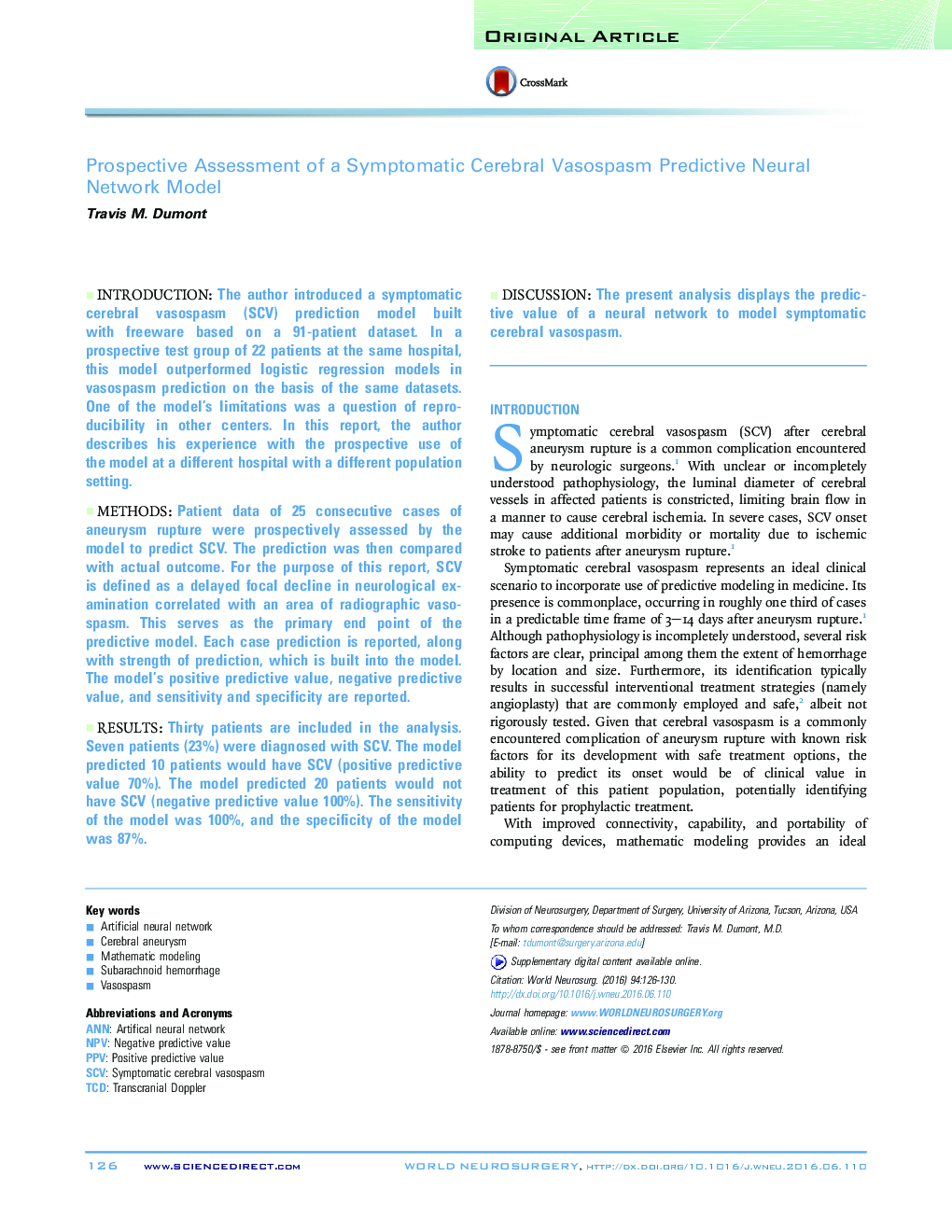| Article ID | Journal | Published Year | Pages | File Type |
|---|---|---|---|---|
| 3094593 | World Neurosurgery | 2016 | 5 Pages |
IntroductionThe author introduced a symptomatic cerebral vasospasm (SCV) prediction model built with freeware based on a 91-patient dataset. In a prospective test group of 22 patients at the same hospital, this model outperformed logistic regression models in vasospasm prediction on the basis of the same datasets. One of the model's limitations was a question of reproducibility in other centers. In this report, the author describes his experience with the prospective use of the model at a different hospital with a different population setting.MethodsPatient data of 25 consecutive cases of aneurysm rupture were prospectively assessed by the model to predict SCV. The prediction was then compared with actual outcome. For the purpose of this report, SCV is defined as a delayed focal decline in neurological examination correlated with an area of radiographic vasospasm. This serves as the primary end point of the predictive model. Each case prediction is reported, along with strength of prediction, which is built into the model. The model's positive predictive value, negative predictive value, and sensitivity and specificity are reported.ResultsThirty patients are included in the analysis. Seven patients (23%) were diagnosed with SCV. The model predicted 10 patients would have SCV (positive predictive value 70%). The model predicted 20 patients would not have SCV (negative predictive value 100%). The sensitivity of the model was 100%, and the specificity of the model was 87%.DiscussionThe present analysis displays the predictive value of a neural network to model symptomatic cerebral vasospasm.
